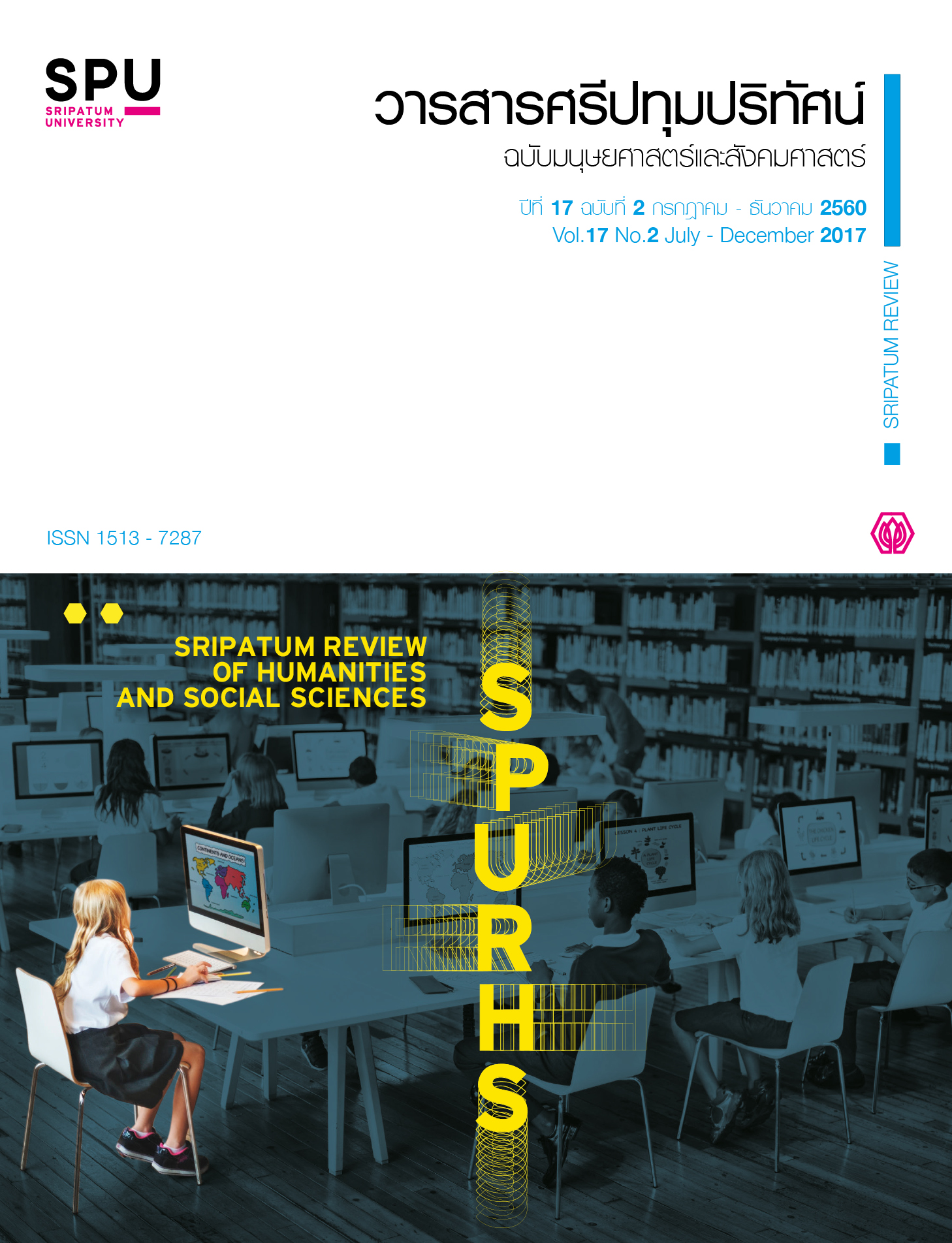A SYNTHESIS OF ONLINE JOURNAL RESEARCH ARTICLES ON ENGLISH GRAMMAR DEVELOPMENT
Main Article Content
Abstract
The purposes of this study were to identify approaches to English grammar presentation used by Thai teachers. Therefore, this study used 49 published research articles on English grammar development in Thailand as the research sample. The articles were collected solely from online journals published between years 2012 and 2015. The results revealed that the majority of the online research articles on English grammar development in Thailand, in other words, 45 of the 49 research articles or 91.84 percent, applied a deductive approach to presenting English grammar; while only 1 of the 49 research articles, or 2.04 percent, made use of the inductive approach. Moreover, 2 of the 49 research articles, or 4.08 percent, made use of the direct method. Lastly, 1 of the 49 research articles, or 2.04 percent, made use of the audio-lingual method in teaching English grammar. Mastering the English grammar enables accurate communication from the sender to the receiver, according to the sender’s exact intentions. The content or the message will not be distorted, making communication fail-proof and preventing confusion. Grammar knowledge also helps to develop better English learning skills for listening, speaking, reading and writing aims. Thus, grammar is a tool that enables successful communication.
Article Details
1. กองบรรณาธิการสงวนสิทธิ์ในการพิจารณาและตัดสินการตีพิมพ์บทความในวารสาร
2. บทความทุกเรื่องจะได้รับการตรวจสอบทางวิชาการโดยผู้ทรงคุณวุฒิ แต่ข้อความและเนื้อหาในบทความที่ตีพิมพ์เป็นความรับผิดชอบของผู้เขียนแต่เพียงผู้เดียว มิใช่ความคิดเห็นและความรับผิดชอบของมหาวิทยาลัยศรีปทุม
3. การคัดลอกอ้างอิงต้องดำเนินการตามการปฏิบัติในหมู่นักวิชาการโดยทั่วไป และสอดคล้องกับกฎหมายที่เกี่ยวข้อง
References
Dickins, P. M. R.& Woods, E.G. 1988. Some criteria for the development of communicative grammar tasks. TESOL Quarterly 22 (3): 623-646.
Eisenstein, M.1987. Grammatical explanations in ESL: Teach the student, Not the method. In M. Long & J. Richards (Eds.), Methodology in TESOL 282-292. New Jersey: Heinle & Heinle.
Felder, R., & Henriques, E. 1995. Learning and teaching styles in foreign and second language education. Foreign Language Annals 28 (1): 21-31.
Fortune, A. 1992. Self-study grammar practice: Learners views and preferences. ELT Journal 46 (2): 160-171.
Graddol, D. 2006. English next. Plymouth: British Council.
Munpanya, P. 2014. “Development of Communicative Grammar Lessons to Promote English Speaking Ability and Self-confidence Among Tutorial School Students.” Master’s Thesis, Faculty of Education, Graduate School, Chiang Mai University.
Pazaver, A., & Wang, H. 2009. Asian Students’ Perceptions of Grammar Teaching in the ESL Classroom. Journal of Language Society and Culture 27: 27-35.
Skehan, P. 2003. A Cognitive Approach to Language Learning. Oxford: Oxford University Press.
Sowden, C. 2012a. ELF on a mushroom: The overnight growth in English as a lingua franca. ELT Journal 66 (1): 89-96.
Sowden, C. 2012b. A reply to Alessia Cogo. ELT Journal 66 (1): 106-107.
Thornbury, S. 1999. How to teach grammar. Harlow, Essex: Pearson Education Limited.
Wungnai, S. 2003. “The Study of an Achievement on Learning English Grammar Using Communicative Activities of Matthayomsuksa One Student at the Secondary Demonstration School of Rajaphat Institute Suansunandha.” Master’s Thesis, Faculty of Education, Graduate School, Silpakorn University.


